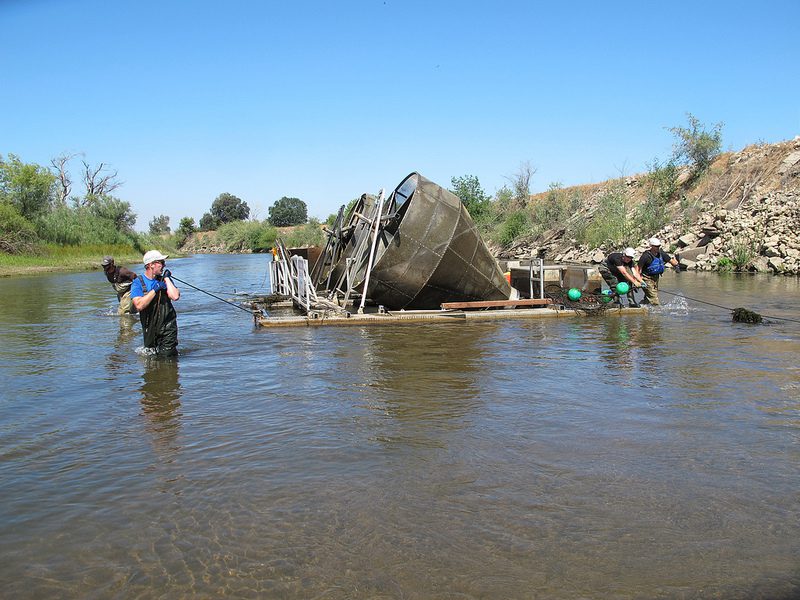Friday July 19, 2013
Now that all the salmon in the Tuolumne River have hatched and migrated downstream, our crew have made quick work of removing a rotary screw trap for the season. This particular trap is located at the downstream boundary of the salmon spawning reach. By stationing the trap here we get a good account of the number of juvenile salmon hatched each spring. Not only do fisheries managers like to know how many salmon are produced each year, they also need to know how many salmon successfully make it out of the river. To accomplish this, we also use rotary screw traps near the river confluence.

There is a lot that can happen to a young salmon as it makes its way down river. Juvenile salmon are most vulnerable to hazards during this stage in their life cycle. While migrating downstream salmon, may be forced to navigate past structures and avoid unscreened pumps where they can get sucked in and ground to pieces. Water conditions such as temperature, dissolved oxygen, and pollutants can also be fatal to young salmon, or make them susceptible to disease. Migrating salmon also benefit from refugia for feeding and avoiding predators. The ecology and geomorphology of Central Valley rivers have changed drastically in the last century, so native salmon must now compete with numerous non-native fish for food and space. Outmigrating salmon use the cover of darkness or turbid water to avoid the gauntlet of predators waiting to ambush them as they make their journey to the Delta estuary. While having rotary screw traps upstream and downstream can provide an estimate of survival, it does not reveal the reasons for changes in survival that can only be accomplished with multiple years of data and additional investigation. In matter of months, we’ll be reinstalling traps to begin the process of monitoring once again (see Some assembly required).
